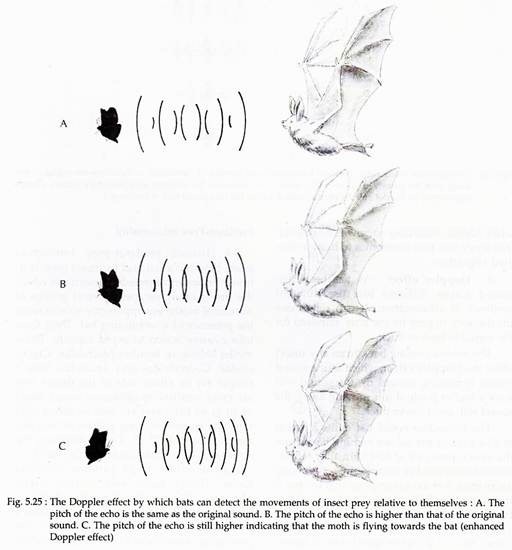In this article we will discuss about the predator-prey relationship between bat and insect.
A distinct predator-prey interaction exists between a bat and its insect prey. It is, however, an uncontested encounter in which the insect rarely escapes. Several groups of nocturnal moths are apparently able to sense the presence of a wondering bat. They, thus, take evasive action to avoid capture.
These moths belong to families Noctuidae, Ctenuchidae, Geometridae and Aractidae, have a simple ear on either side of the thorax that are most sensitive to ultrasonic sound range of 20 to 40 kHz, and are able to detect high intensity signals of many species of bats at a range of about 40 m.
Upon detecting the approach of a bat, these moths adopt a variety of erratic flight patterns including loops, abrupt turns and vertical dives. Moreover, these moths have the ability to ‘jam’ a bat’s echo locating system or cause a pursuing bat to break off its attack, by producing a sequence of brief, high-pitched and rapid clicks, containing ultrasonic frequencies.
ADVERTISEMENTS:
On the contrary, for its survivality, bats have apparently modified their behaviour in the following ways:
1. The bats operate outside the hearing range of the moths by utilizing high frequency sounds (above 100 kHz).
2. Others emit orientation sounds well below 20 kHz.
3. Another tactic is to use low intensity sounds.
ADVERTISEMENTS:
Due to such rapid alternation of their signals, bats suffer as they have to reduce their foraging range to distances of a meter or less.
